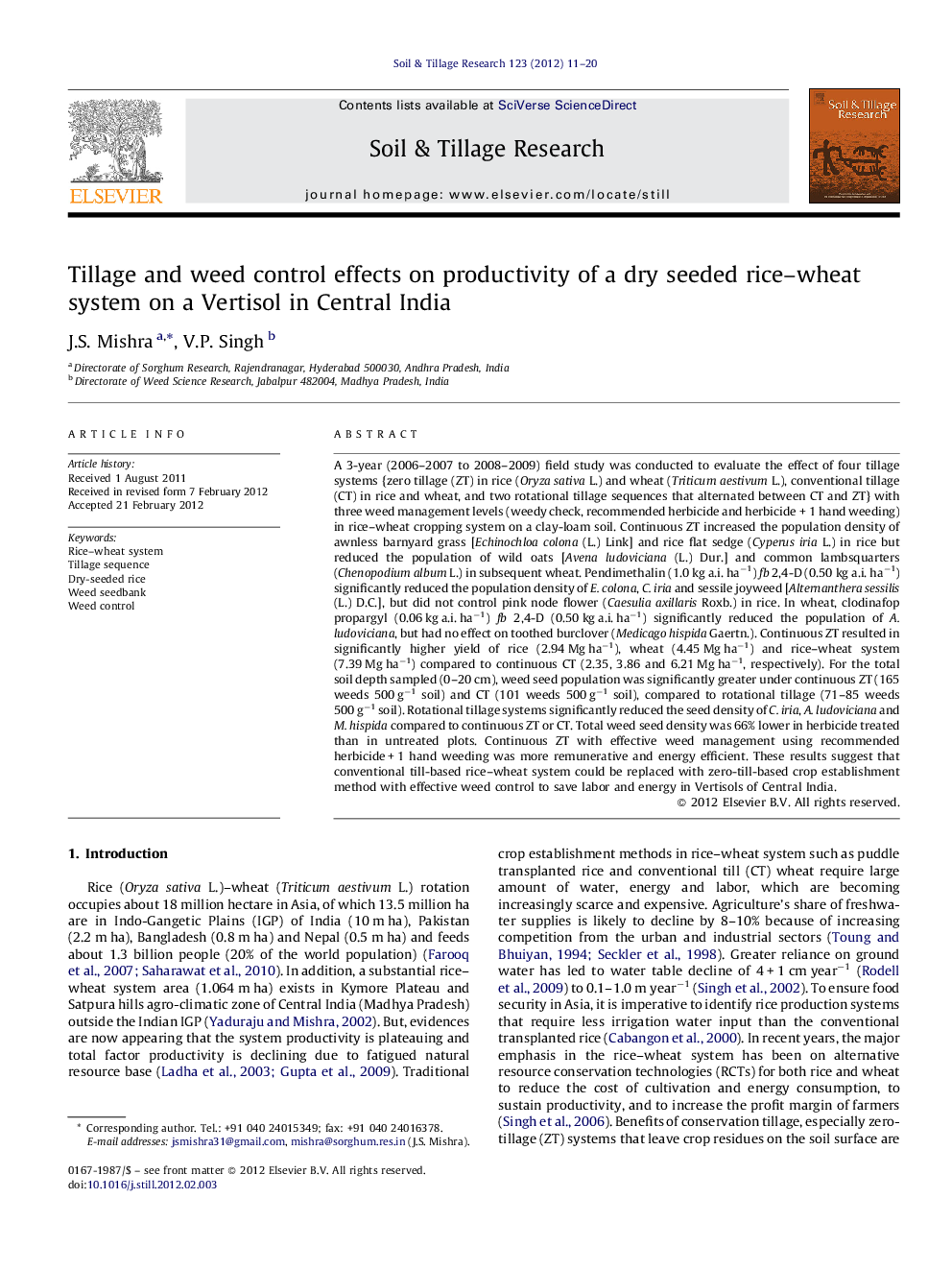| کد مقاله | کد نشریه | سال انتشار | مقاله انگلیسی | نسخه تمام متن |
|---|---|---|---|---|
| 305897 | 513061 | 2012 | 10 صفحه PDF | دانلود رایگان |

A 3-year (2006–2007 to 2008–2009) field study was conducted to evaluate the effect of four tillage systems {zero tillage (ZT) in rice (Oryza sativa L.) and wheat (Triticum aestivum L.), conventional tillage (CT) in rice and wheat, and two rotational tillage sequences that alternated between CT and ZT} with three weed management levels (weedy check, recommended herbicide and herbicide + 1 hand weeding) in rice–wheat cropping system on a clay-loam soil. Continuous ZT increased the population density of awnless barnyard grass [Echinochloa colona (L.) Link] and rice flat sedge (Cyperus iria L.) in rice but reduced the population of wild oats [Avena ludoviciana (L.) Dur.] and common lambsquarters (Chenopodium album L.) in subsequent wheat. Pendimethalin (1.0 kg a.i. ha−1) fb 2,4-D (0.50 kg a.i. ha−1) significantly reduced the population density of E. colona, C. iria and sessile joyweed [Alternanthera sessilis (L.) D.C.], but did not control pink node flower (Caesulia axillaris Roxb.) in rice. In wheat, clodinafop propargyl (0.06 kg a.i. ha−1) fb 2,4-D (0.50 kg a.i. ha−1) significantly reduced the population of A. ludoviciana, but had no effect on toothed burclover (Medicago hispida Gaertn.). Continuous ZT resulted in significantly higher yield of rice (2.94 Mg ha−1), wheat (4.45 Mg ha−1) and rice–wheat system (7.39 Mg ha−1) compared to continuous CT (2.35, 3.86 and 6.21 Mg ha−1, respectively). For the total soil depth sampled (0–20 cm), weed seed population was significantly greater under continuous ZT (165 weeds 500 g−1 soil) and CT (101 weeds 500 g−1 soil), compared to rotational tillage (71–85 weeds 500 g−1 soil). Rotational tillage systems significantly reduced the seed density of C. iria, A. ludoviciana and M. hispida compared to continuous ZT or CT. Total weed seed density was 66% lower in herbicide treated than in untreated plots. Continuous ZT with effective weed management using recommended herbicide + 1 hand weeding was more remunerative and energy efficient. These results suggest that conventional till-based rice–wheat system could be replaced with zero-till-based crop establishment method with effective weed control to save labor and energy in Vertisols of Central India.
► Impact of rotational tillage systems on weeds were examined.
► Tillage systems affect weed populations and soil weed seed bank.
► Tilling land during rice season was more effective for weed control than wheat season.
► Zero-tillage with sound weed control is a viable alternative to conventional tillage.
Journal: Soil and Tillage Research - Volume 123, July 2012, Pages 11–20